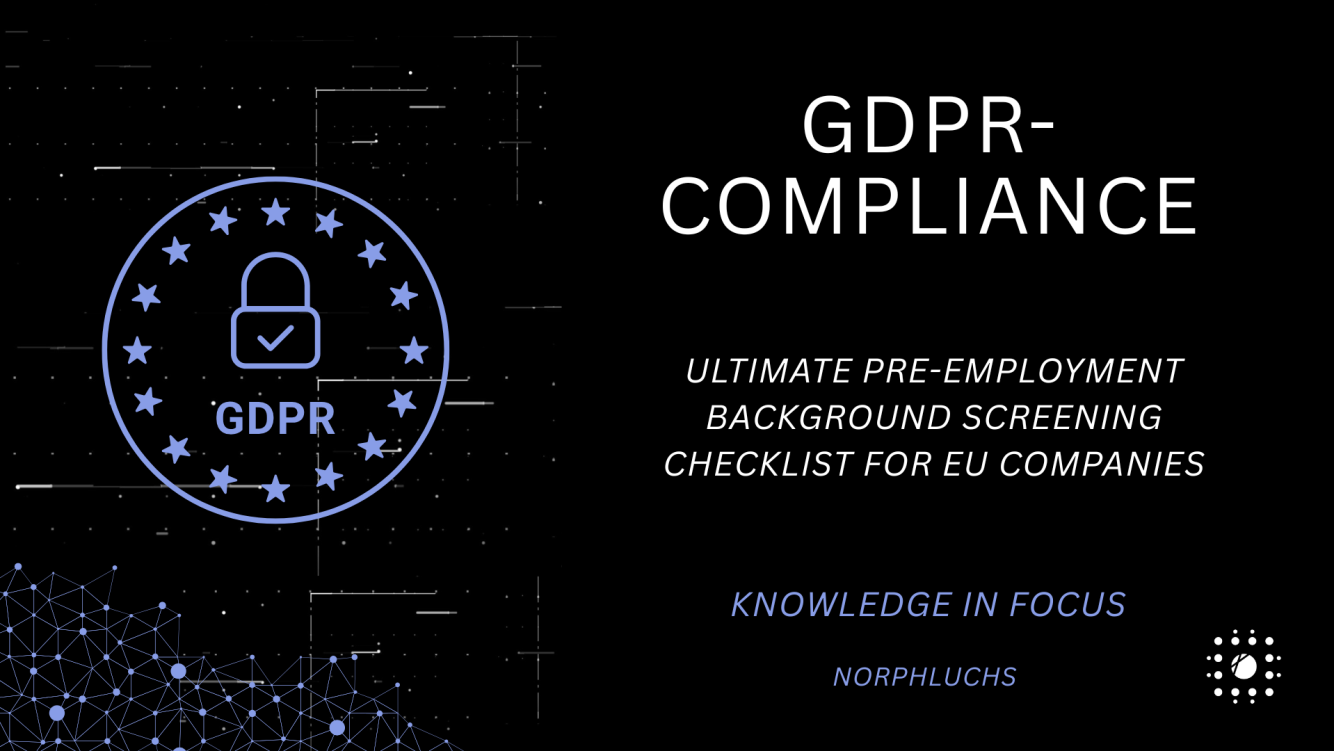
NIS-2Background ChecksPre-Employment Screening
Ultimate Pre-Employment Background Screening Checklist for EU Companies
Pre-employment background checks are an essential tool for reducing hiring risks, protecting company assets, and ensuring compliance with EU data protection requirements. Whether you operate in finance, healthcare, tech, or critical infrastructure, a structured, GDPR-aware screening process helps organisations make informed hiring decisions. For companies regulated under frameworks like NIS-2, thorough screenings are also a key element of demonstrating organisational security measures.
- Classify the role risk level (Low / Medium / High): determine level of access and sensitivity.
- Decide scope of screening by role: identity verification for low; credential leak checks, social profiling and official registry checks for medium; enhanced checks for high.
- Select legal basis & document LIA: choose legitimate interest or other basis, run and store a Legitimate Interest Assessment. Source: Blockint
- Prepare candidate privacy notice: include scope, legal basis, retention, and contact for questions.
- Use accredited sources first: official registries, professional registers, central government notices. Log source & date for each finding.
- Run OSINT checks (clear/deep/dark web) with provenance: ensure the tool records source URLs, screenshots and timestamps.
- Check for criminal conviction restrictions: if criminal records are needed, verify local law and use official channels where required. Source: Sterling
- Limit collection & store minimally: keep only evaluation-relevant snapshots; avoid collecting irrelevant personal history.
- Review & triage findings: set a review workflow (HR + security) and mark items that require candidate follow-up.
- Candidate response step: allow candidate to explain or dispute findings before final decision.
- Decision record & rationale: record the hiring decision, what was considered, and legal basis. This is evidence for auditors/regulators. Source: enisa.europa.eu
- Retention & deletion policy: define how long screening reports are kept and ensure secure deletion.
- Secure storage & access control: encrypt reports, restrict access to a defined small group, and log access.
- Periodic review of process: review policy annually or after any incident and update checks.
- Training for HR & hiring managers: mandatory briefings on privacy, bias, and how to interpret OSINT findings.
Use this checklist as a baseline and align entries with country-specific legal advice. For regulated industries like those under NIS-2, documented pre-employment checks are also valuable evidence of compliance.